
고다이지의 가을 조명 2026
Hannah Sy정식으로는 '고다이지쥬쇼젠지'라고 불리는 절이며, 교토 동쪽의 히가시야마 산맥에 위치해 있다. 고다이지 절은 1605년, 도요토미 히데요시의 부인인 키타노만도로코가 그의 넋을 기리기 위해 지은 절이다. 고다이지는 1789년 이후 몇 번의 화재를 입었지만 오타야마, 카이산도, 칸게츠다이, 카사테이, 그리고 시구레테이만은 잘 보존되었다. 지금은 모두 일본의 중요 문화재로 지정되어 있다.

Kodaiji (高台寺) is located northeast of the Yasaka Hokanji Temple at the foot of the Higashiyama Ryozen Mountains in Kyoto. The official name of the temple is Kodaiji-Jushozenji Temple. In 1606, the temple of Kita-no-Mandokoro was dedicated in memory of her late husband. Kita-no-Mandokoro was also known as nene. The Kaisando (Founder's Hall), Otama-ya (Sanctuary), Kasatei (Tea House), Shiguretei (Tea House), Omotetmon (Gate to the Sanctuary), and Kangetsudai (Moon Viewing Pavilion) are designated as important cultural assets in Japan.
The temple garden is said to have been designed by the landscape gardener Kobori Enshu (1579-1647). The Japanese government has designated the garden as a historic site and a place of scenic beauty.
The interior of the main building was originally painted with lacquer and covered with exquisite gold decorations. However, the current building was rebuilt in 1912 after several fires. Kodai-ji hosts modern art exhibitions in spring and fall. These are set up in the rock garden in front of Houjyo and are creatively illuminated at night.
From Hankyu Kawaramachi Station or Keihan Shijo Station, take city bus 207 and get off at Higashiyama Yasui. Kodaiji Shrine is a 7-minute walk from there. From JR Kyoto Station or Kintetsu Kyoto Station, take city bus 206 (Higashiyama direction) and get off at Higashiyama Yasui. Kodaiji Shrine is a 7-minute walk from there. From JR Kyoto Station or Kintetsu Kyoto Station, the shrine is a 15-minute drive by car or taxi.

정식으로는 '고다이지쥬쇼젠지'라고 불리는 절이며, 교토 동쪽의 히가시야마 산맥에 위치해 있다. 고다이지 절은 1605년, 도요토미 히데요시의 부인인 키타노만도로코가 그의 넋을 기리기 위해 지은 절이다. 고다이지는 1789년 이후 몇 번의 화재를 입었지만 오타야마, 카이산도, 칸게츠다이, 카사테이, 그리고 시구레테이만은 잘 보존되었다. 지금은 모두 일본의 중요 문화재로 지정되어 있다.
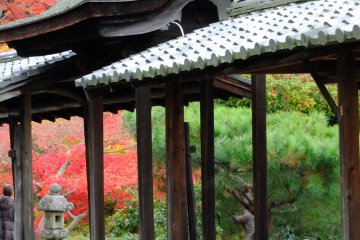
일찍이 "네네"라고 불린 이 걸출한 여인은 위대한 천하의 장군이며 남편이었던 도요토미 히데요시의 사후 명복을 기원하기 위해 1606년 이 사찰을 건립했고, 후에 출가해 고다이인 코게츠니라고 자칭했으며,1624년 고다이인에서 서거할때 켄닌지의 산코오쇼가 주지스님이 되어 코다이지로 개명되었다. 이 사원자체가 정말 아름다웠지만, 내 마음을 사로잡은 것은 그 광장한 경내였다. 산책이나 인간관찰과 사진을 찍기에는 좋은 곳이다. 언덕 위에 펼쳐진 대나무 숲과 경내 중앙의 연못 또한 멋지다.

타나바타 축제를 기념하기 위해 교토 고다이지 주차장에 장식된 대나무 가지의 매달아놓은 컬러풀한 전시. 손수 만든장식은 아이들의 소망을 담고 있다.

교토 히가시야마 산기슭에 있는 고다이지는 전국시대의 웅걸 도요토미 히데요시의 보제를 애도 하기위해 부인 네네가 건립했다. 개창은 히데요시가 죽은 후 1606년(게이쵸 11)이며, 경사면을 이용하여 세련된 기교로 공간 구성이 설계되어, 여러면에서 표정을 바꾸는 훌륭한 정원이 경내지에 펼처진다. 완만한 커브를 그리는 오솔길을 걸어서 다실·이호안을 지나면 연못을 둘러싼 상쾌한 경치, 거기서 언덕을 올라가면 시선이 높아지면서 경관이 바뀐다. 언덕 위에는 토방으로 이어진 특이한 두 개의 다실, 가사테이가 있고, 다실 안쪽에서 대나무 숲을 빠져 내려가면 또 다른 다실 운고안이 있다.

코다이지(高台寺)는 교토시 히가시야마구에 있는 임제종 건인사파의 사찰로 산호는 쥬부산(鷲峰山), 사호는 상세하게 코다이쥬죠젠지(高台寿聖禅寺)라 칭하고 있다. 석가여래를 본존으로 하는 선종사원이며, 히데요시와 북방의 정소를 모시는 사당으로서의 역활을 가진 사원으로, 마키에조도(蒔絵調度)류를 다수 소장하므로 "마키에노데라"라고도 불리고 있다.

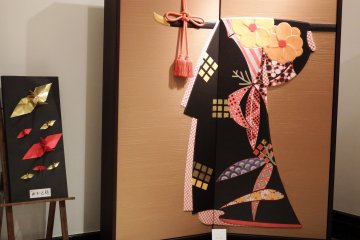
시조 카라스마의 호텔 닛코 프린세스 교토는 싱글 룸 (24㎡)부터 트윈 룸 (48㎡)까지 갖춘 넓적한 객실을 갖추고 있다. 호텔 스태프들은 트레이닝을 잘 받고 최고의 예절과 접대를 한다.
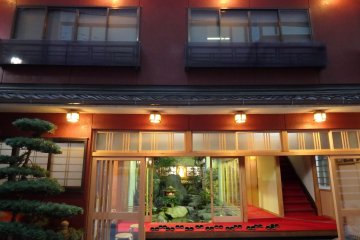


트라토리아 미노우라는 고다이지와 야사카 진자사당 근처에 있는 작은 식당이다. 평일 점심 세트(1500엔)는 합리적이고 맛도 좋았다. 그것은 작은 샐러드와 빵을 곁들인 주요 파스타 요리를 포함한다. 술과 후식은 별도이다.
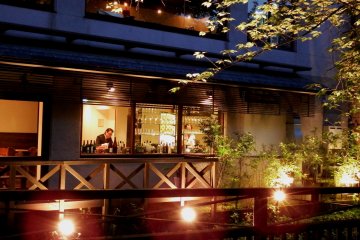
양 요리 'MIKAKU', 기온 시라카와, 교토; 내가 시라카와 강을 따라 걸어가고 있을 때, 따뜻한 빛으로 불이 켜져 있는 멋지고 세련된 강변 식당이 눈에 띄었고, 갑자기 나는 그곳에 가고 싶었다

교토 시라카와 거리에 있는 기온비프 미카쿠: 엄선된 일본산 쇠고기만이 제공된다. 교토 기온 지역의 시라카와 강을 내려다보는 낭만적인 분위기의 레스토랑이다.
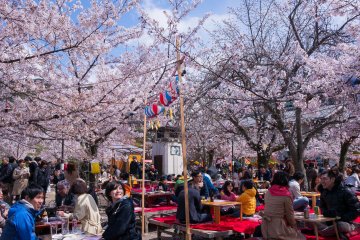
Maruyama Park is the oldest public park in Kyoto and a popular springtime cherry blossom viewing spot. It opened in 1886 and is located next to Yasaka Shrine in Higashiyama District. The park was laid out by the well-known gardening expert Ogawa Jibee (1860–1933). As it is one of the most popular places for hanami in Kyoto, it can get quite crowded during the high season in April. The main attraction of the park is a beautiful weeping cherry that is illuminated at night. In the southwest of the park is the Chorakukan Villa, which the Japanese tobacco king Murai Kichibee had built. This property is now used as a hotel.

The Yasaka Cry, located in the Gion district in Kyoto, is often referred to as the Gion Shrine. The shrine is one of the most famous shrines in the city of Kyoto and is located at the end of Shijo-dori Street. The grounds of the shrine include several buildings and gates. Including the main hall and also a stage. Every year, Yakasa Shrine hosts numerous events and festivals that are important to the Japanese and is a popular destination for many visitors to Kyoto City. The Yasaka Shrine respects the gods Susanoo-no-mikoto, Kushiinadahime-no-mikoto, and Yahashira-no-mikogami. Above all, Susanoo-no-mikoto is an important god in Japanese mythology, known for his victory over Yamata-no-orochi (a great serpent with eight heads: a symbol of numerous disasters).
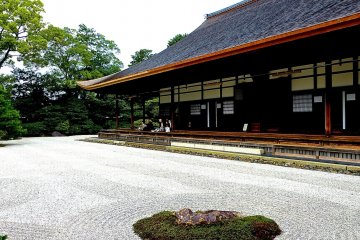
Kennin-ji is a historic Zen Buddhist temple in Higashiyama, Kyoto, Japan, near Gion, at the end of Hanami Lane. It is considered to be one of the so-called Kyoto Gozan or "five most important Zen temples of Kyoto". [Wikipedia]